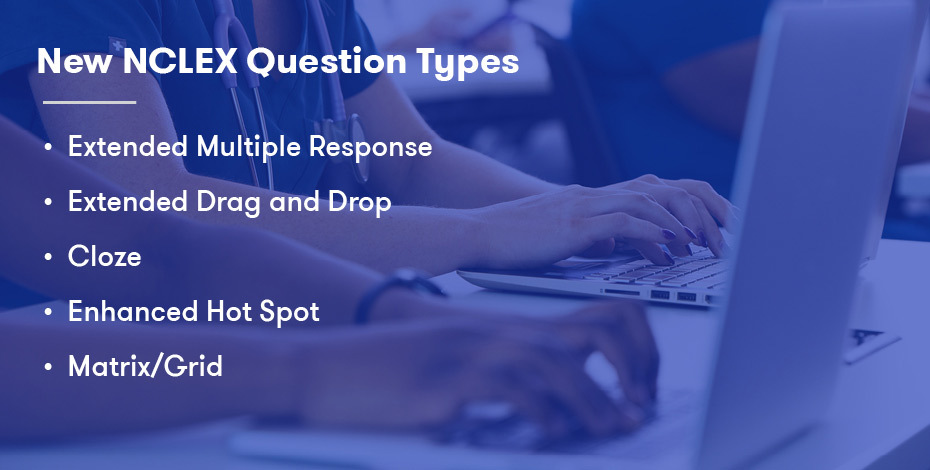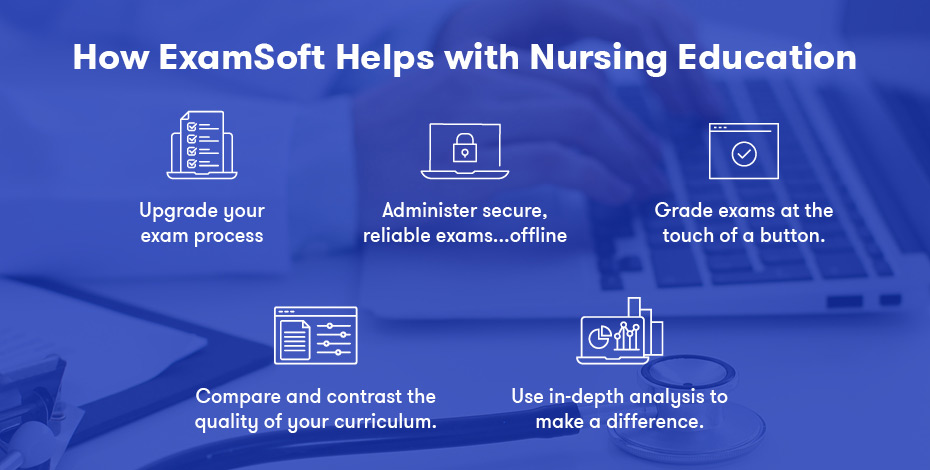Healthcare continues to evolve at a rapid pace for a number of reasons: Americans are living longer with multiple chronic illnesses, the healthcare industry has seen technological advances, and healthcare professionals can now offer improved treatments — to name a few. As a result of these changes, nursing is advancing as well.
A Brief History of the NCLEX®
The NCLEX-RN has gone through many iterations since its inception in 1944. Before this, each state required its own licensure exam for nurses. The NCLEX, by comparison, ensured nurses across the United States (and Canada) could provide uniform care, no matter where they practiced. The National Council of State Boards of Nursing (NCSBN), which took over administration and design of the exam in 1974, continues to make updates, revising aspects of the exam every three years.
The most significant change, possibly in the history of the exam, is that the NCSBN has added five new question types to what is now called the Next Generation NCLEX or NGN.
Why NGN?
With the goal of improving nurse preparedness, and thus patient outcomes, the NCSBN started to question if they were doing enough to ensure that new nurses were ready to “enter the floor.” The answer was “no,” according to Nursing.com. The focus for improvement became critical thinking in real-world nursing scenarios. New nurse graduates are facing increasingly complex decisions, and the NSCSB considered the previous iterations of the NCLEX inadequate measures of nurse preparedness.
The solution? New types of questions (new item formats) that focus on clinical judgment.
5 New NCLEX Question Types
To align with situations nurses will face and decisions they will have to make in clinical settings, the NCSBN revised the NCLEX to include the following question types:
- Extended Multiple Response: This item format allows exam-takers to choose more than one of the listed answer options, with partial credit available for correct answers. This aligns with what nurses will see in a clinical setting because rarely will there be only one correct answer or a single action to take in patient care. See more on Select All That Apply question types.
- Extended Drag and Drop: Similar to the current NCLEX-ordered response items, exam-takers move response options to the answer spaces. Unlike the current iteration, not all responses are necessary to answer the question. Again, rarely does a patient have only one issue to address.
- Cloze (Drop-Down): This item format is much like a fill-in-the-blank, except the possible responses appear in a drop-down list. The blank spaces may be in a sentence, table, or chart. The choices may be single words or phrases.
- Enhanced Hot Spot (Highlighting): These items allow exam-takers to highlight words and phrases from a patient’s medical record — including medication records, notes from other providers, assessment notes, and more — to answer the question.
- Matrix/Grid: For this item format, candidates choose one or more of the options in rows and columns. Exam-takers can address more than one aspect of a client’s situation.
These new item types include case studies that test for clinical decision-making in a variety of healthcare settings.
Clinical Judgment Model
According to the NCSBN, “Clinical judgment is defined as the observed outcome of critical thinking and decision-making. It is an iterative process that uses nursing knowledge to observe and access presenting situations, identify a prioritized client concern, and generate the best possible evidence-based solutions in order to deliver safe client care.”
In 2016, the NCSBN’s comprehensive clinical judgment model appeared in the Journal of Applied Testing Technology. The goal was to create a framework for theory-based assessments “to measure a higher-order cognitive construct.”
The clinical judgment model consists of layers — each leading to the next depending on the decisions made in the previous layer.
For example: a client presents certain symptoms. Based on various cues, the nurse forms a hypothesis and generates evidence-based solutions. The nurse then takes an action or actions and evaluates the outcomes.
NGN Resources
The NCSBN’s webite provides resources regarding the NGN for nurse educators and students.
It is vital that new nurses enter the workforce with the skills and knowledge they need to provide optimal patient care, and the current NCLEX does a great job of assessing those metrics. However, the NCSBN realized something was missing: clinical judgment in realistic scenarios. The Next Generation NCLEX, coming in 2023, with its improved item formats, will ensure that nurses have the clinical skills and clinical judgment they need to make the right judgments based on the right factors in the right situations.
Partnering with NurseThink, ExamSoft has created Clinical Judgment Exams (CJE) to improve exam-taker learning outcomes and prepare them for the Next Generation NCLEX. ExamSoft offers two packages for the CJEs: a core solution and a comprehensive solution.
Sources:
NCSBN: Next Generation NCLEX Project
NCSBN: Next Generation NCLEX (NGN) Project
NCSBN: Next Generation NCLEX News: Approved NGN Item Types
NCSBN: Next Generation NCLEX FAQs
NCSBN: Next Generation NCLEX Resources
NurseThink: Preparing for Next Gen Learning From Fundamentals to NCLEX and Beyond






